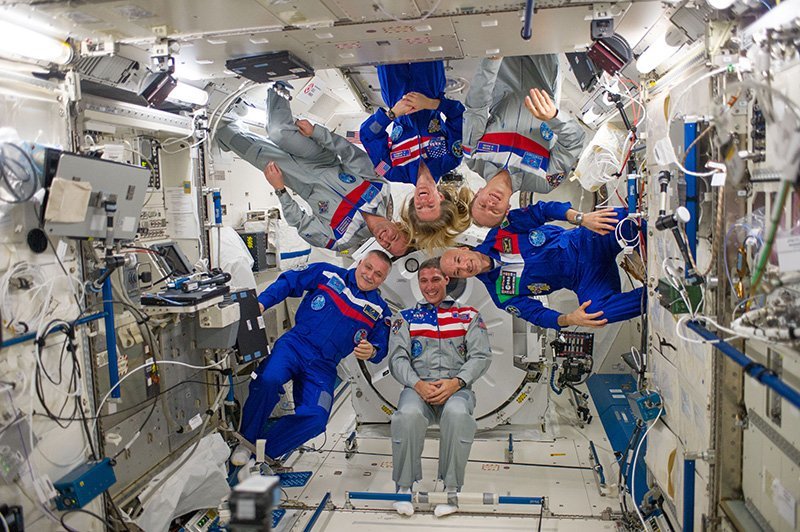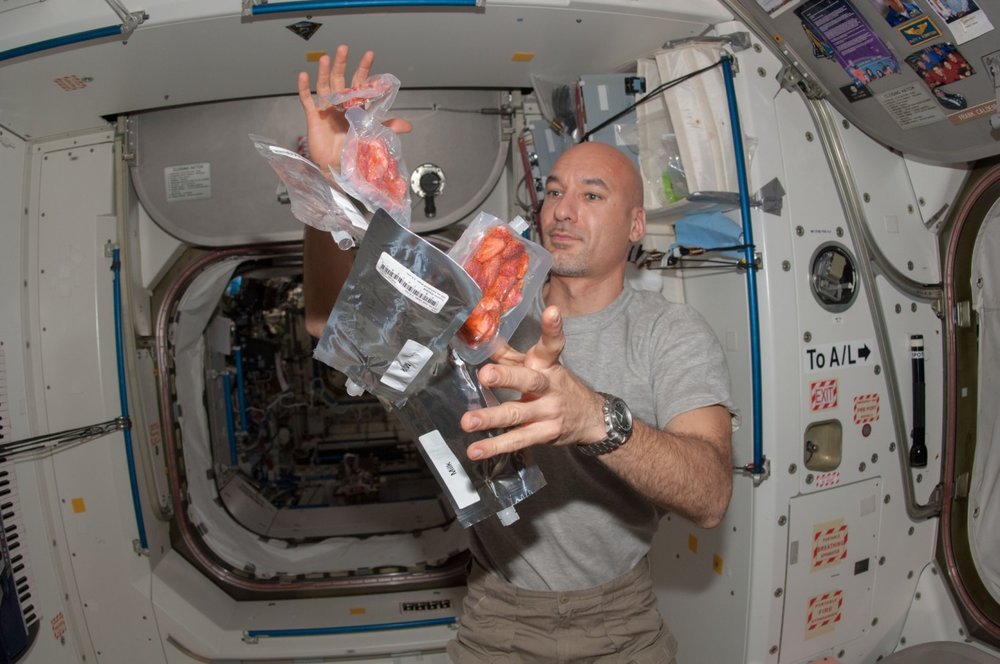We’ve all heard about NASA making its astronauts drink their own urine – wait, it’s not as gross as it sounds – and now a new technology will be able to turn human waste into a nutrient-rich marmite-like spread which could be consumed with a loaf of rustic Italian bread and a nice glass of wine up in the space station or when the astronauts go to Mars…
Not Being ‘Wasteful’ in Space

The cost of taking a single kilo of water or food through a rocket can cost as little as $10,000
Nasa was offering anyone who could find a way to convert human waste into food a hefty cash prize and it seems like the space agency has finally found a solution to one of its biggest problems with sending astronauts in space: feeding them. Astronauts are an awesome bunch of people who are extremely resourceful and will do anything to get the job done – even if they have to consume their own waste for it.
Transporting food and water from Earth to the space station is not cheap. The cost of taking a single kilogram of food and water can cost more than $10,000 – much more than the cost of 1 kilogram of real gold!
The astronauts had to come up with a way to conserve food and water and a few years ago NASA discovered a way to turn urine into distilled water – one of the biggest cost-saving discoveries ever made by the space agency. It was the Water Recovery System sent off to the space station in 2009 which made a breakthrough in water preservation outside planet Earth.
Turning Urine into Water
The technology used to turn urine into drinkable water used artificial gravity to heat the dirty water and collect the purified steam from the top which could then be reused for drinking. However, the purifying technology isn’t perfect and it can only conserve 93% of the water from the urine. So, the astronauts have found a solution to their hydration problem, but what about food?
A Marmite-Like Spread Could be Made from Solid Waste

Until today, the leftover waste and the trash from the space station is being put in a cargo delivery aircraft which is sent back to earth when filled completely
Now a new way of turning human waste into nutrient-rich food has been discovered by scientists which could be used when the spacecraft takes the astronauts on a long journey to Mars – or even beyond that. The process works by exposing human waste to microbes which break down the liquid and solid into a marmite-like substance which is rich in fat and protein. The research was first conducted at University of Pennsylvania where scientists explained that the end result of the process – the ‘microbial goo’ – was completely safe for consumption.
This new method won’t just provide astronauts with a nutritious alternative to real food, which costs millions of dollars to transport from earth to the space station, but will also solve the problem with disposing of waste. In his paper, the lead researcher, professor House, explained the method of converting waste into food using microbes, saying that the microbes would break down the waste through anaerobic digestion – which occurs in the absence of oxygen – and the nutrients will be used to grow food in a microbial reactor.
One of the byproducts of anaerobic digestion is methane gas which could be used to grow a different type of microbe useful in creating the marmite-like spread.
New Opportunities for Deep Space Travel

The particular strain of microbe used to turn waste into a delicious spread is commonly used in animal feed. The end product of the process will contain as much as 52% of protein and 36% fat content, although the method still needs to undergo application for testing.
The scientists say that this new discovery opens more doors for deep space traveling and just by fine-tuning the technology, astronauts could preserve 85 percent of the waste and reuse it instead of ejecting it into space.
Some human waste is already recycled aboard the International Space Station, where water is extracted from astronaut’s urine. Solid waste, on the other hand, is simply ejected into space. Besides efficiently producing a new food source, the new method is also able to break down waste quickly.










